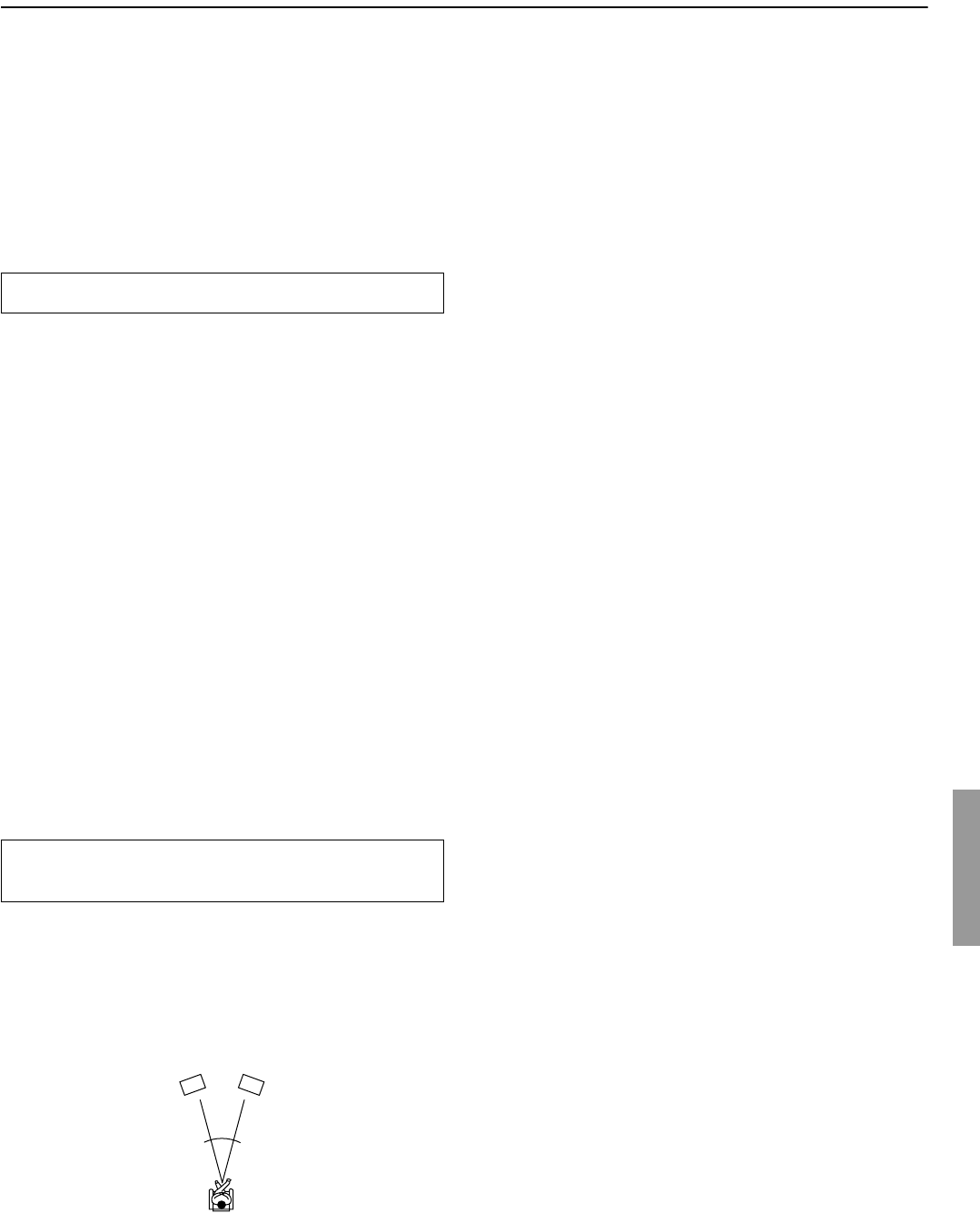
61
Audio Adjust
Reverb Level
This setting allows you to adjust the depth of acoustic reverberation
to match the playback source material, the acoustics of your room,
and such other factors.
Select from the three settings “Low,” “Mid,” and “High.”
Reverb Time
Adjust the reverb time to match the source being played back and
the acoustics of the room. Select from the three settings “Short,”
“Mid,” and “Long.”
Academy Filter (DTR-6.4 only)
Older monaural film mixes relied on high-frequency rolloff in
presentation to sound properly balanced, so that excessive hiss from
the grain structure of the film would not be heard. The high-
frequency loss was typically due to a combination of optical slit
loss, electrical filters, loudspeaker response, and screen loss. Some
films have been transferred to video without such a high-frequency
rolloff, and thus sound overly bright and hissy.
The DTR-6.4 includes this “Academy filter,” which is based on
contemporary playback practices for such films over wide-range
systems.
This can be set to either “On” or “Off.”
Input Channel
This allows you to set the way in which the stereo audio signal is
output in the “Mono” listening mode.
Auto L+R: Select this under normal circumstances. When the
input source is center channel, this center channel is used as the
monaural sound input channel. Otherwise, the left and right
channels are mixed and the mixed signal is used as the
monaural sound input channel.
Left/Right: You will need to select either left or right when
playing a video source that contains bilingual data. In such a case,
the left and right channels will contain the audio for different
languages. Select the channel with the language you desire.
Listening angle
The listening angle is the angle subtended by the front left and right
speakers as seen from the listener. The processing for the virtual
surround will be based on this angle. In the Theater-Dimensional
mode, the setting of 20 and 40 degrees are only for nominal
purposes, so select the setting that is closest to your actual listening
angle.
Center
If the speaker system has a center speaker, the center channel signal
can be output from the center speaker. For instance, in systems
where the front left and right speakers are small, use of the center
speaker may provide a better sound space and reduce the load on
the front speaker. (For the proper soundfield, it is important that the
Settings available when you play monaural signal
Settings available when you set “Theater-Dimensional”
for your listening mode
Front left speaker Front right speaker
Listening angle
speaker levels and speaker distances among the front right, front
left, and center speakers are matched. In order to ensure this, make
sure that the settings in the Speaker Distance Sub-menu and Level
Calibration sub-menu are set correctly.)
On: Select to have the center channel signal output to the center
speaker.
Off: Select to have the center channel signal output to the front
left and right speakers (Phantom Center).
Front Expander
The front expander function spreads out the stereo image in front of
the listener. The created stereo image is as if the front speakers have
been farther apart for the feeling of a wide sound space. This is
especially useful for narrow listening angles of 20 degrees or less.
On: Select to turn on the front expander function to simulate a
wider sound space.
Off: Select to turn off the front expander function for a normal
sound space.
Virtual Surr Level
This setting adjusts the level of the virtual surround signal. This can
be set from –3 to +3 decibels. Lowering this setting can improve the
sound when the definition is unclear or when the sound feels
unnatural.
Dialog Enhance
If the dialog from the center channel is difficult to hear in the
Theater-Dimensional mode, use this setting to improve the clarity.
On: Select to enhance the vocal ranges of the center channel
signal.
Off: Select to output the center channel signal at the regular
level and frequency characteristics.


















